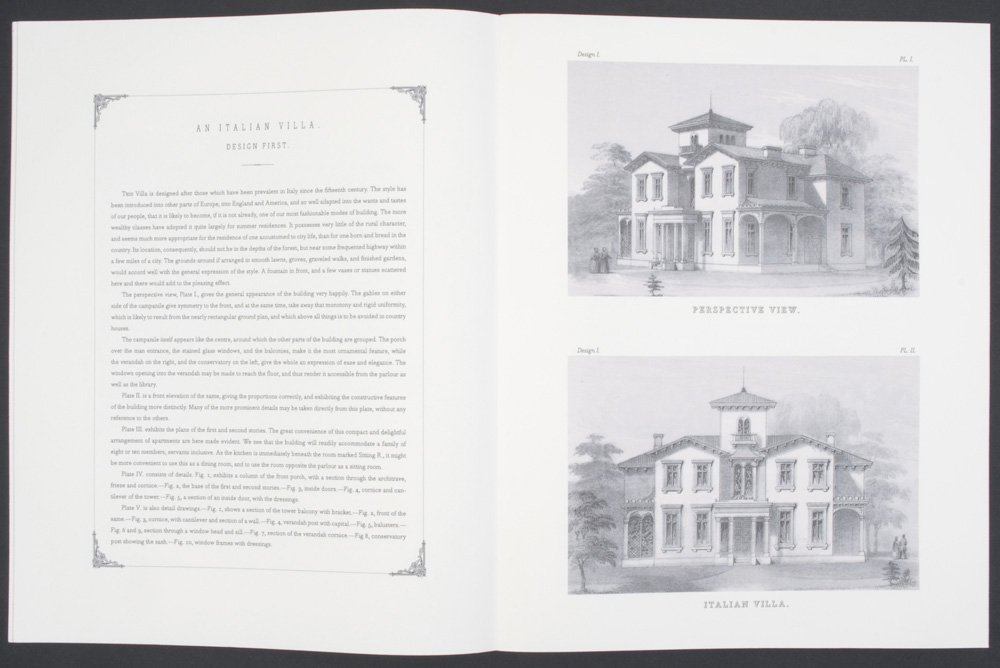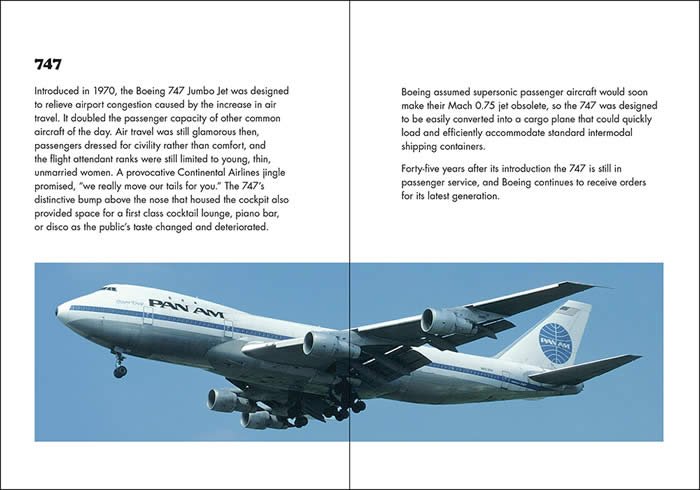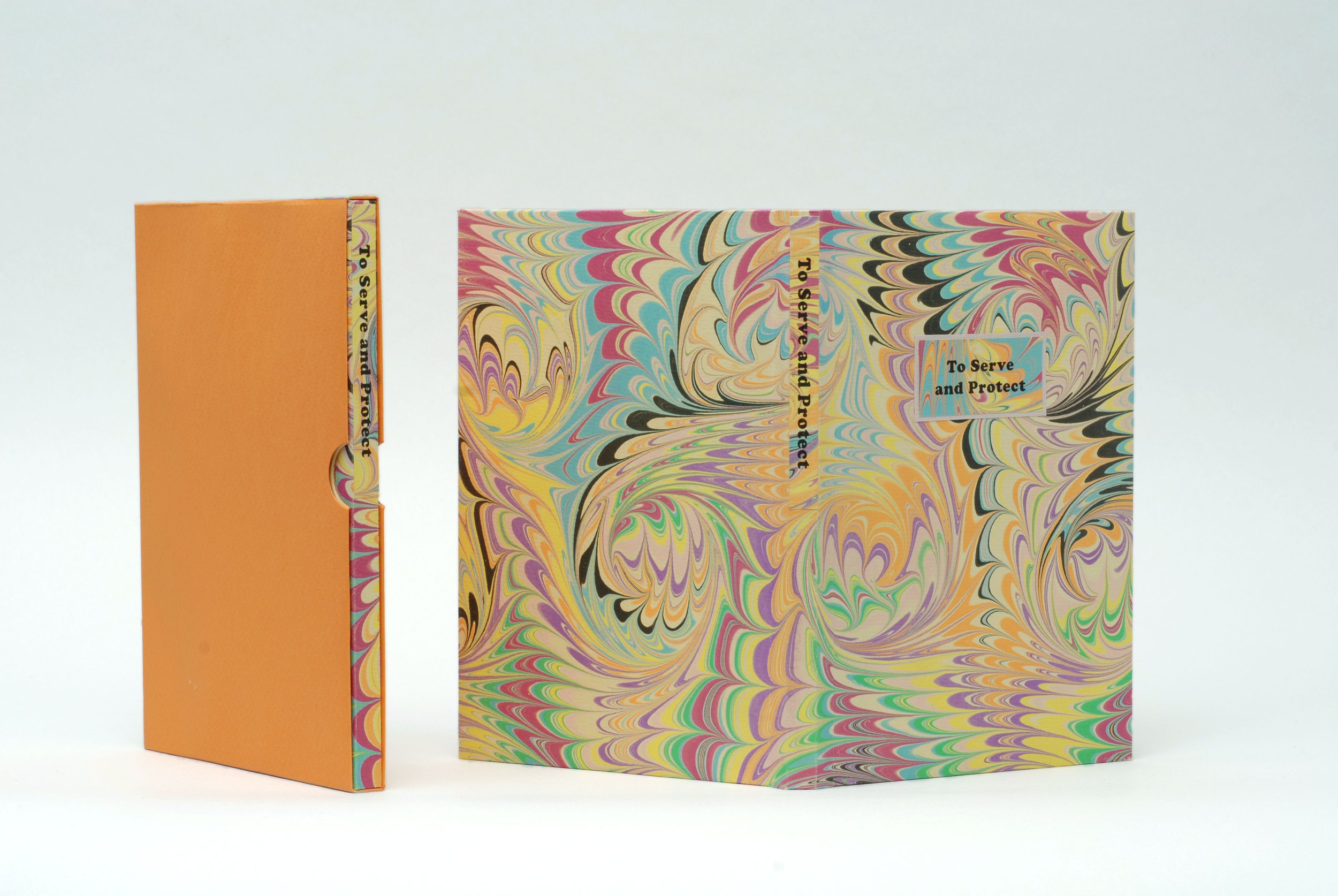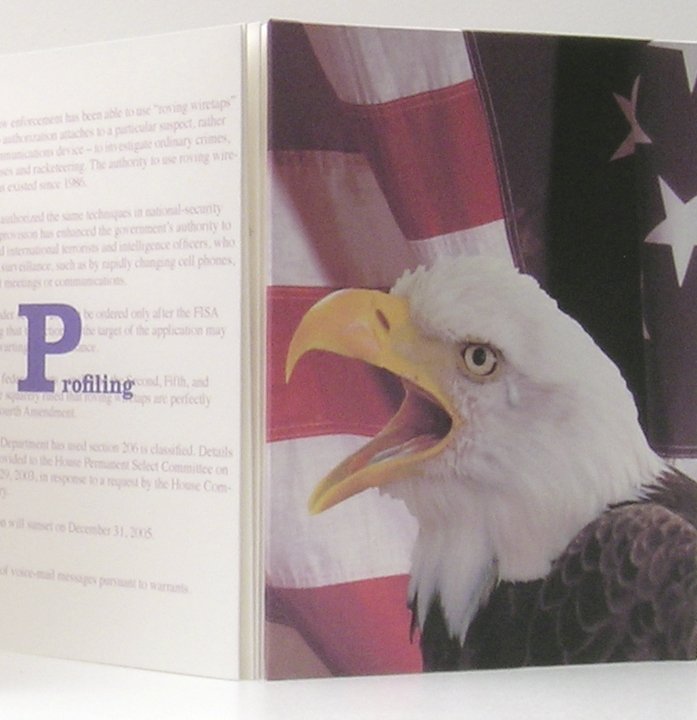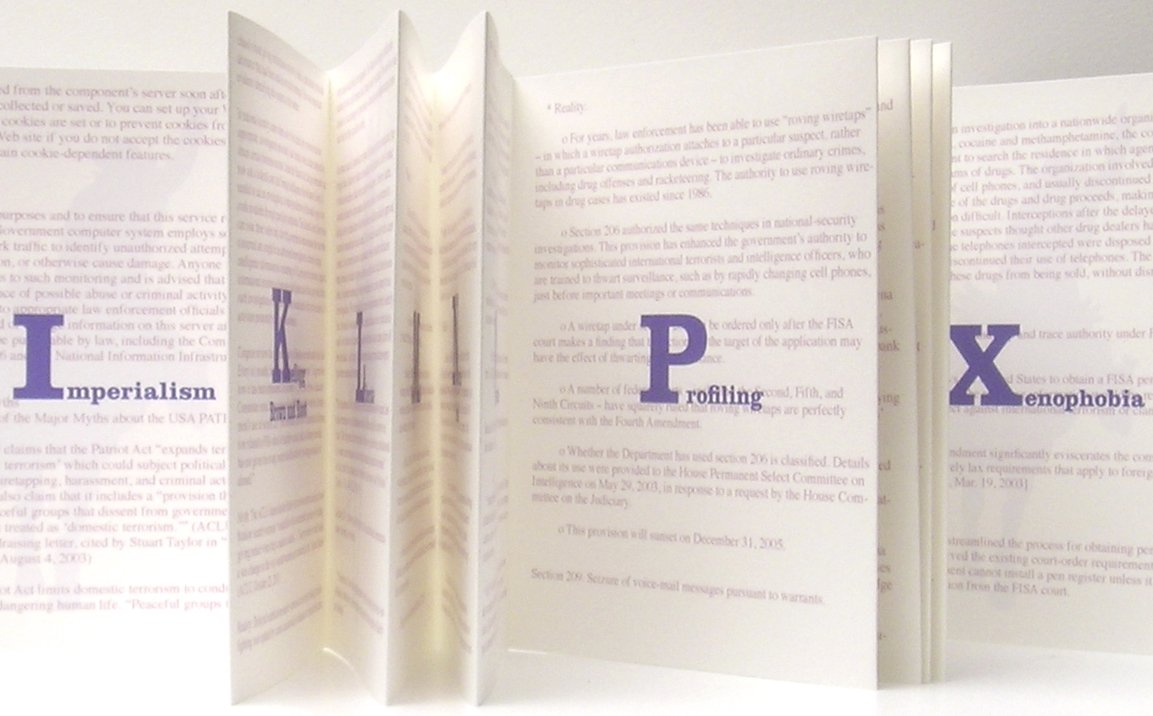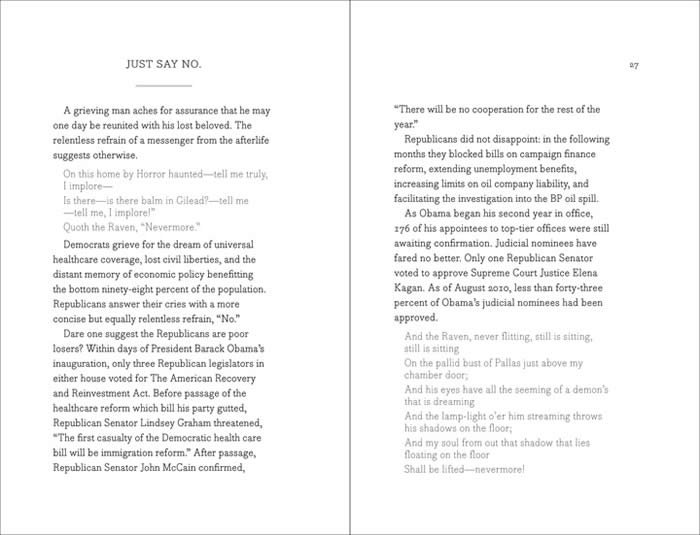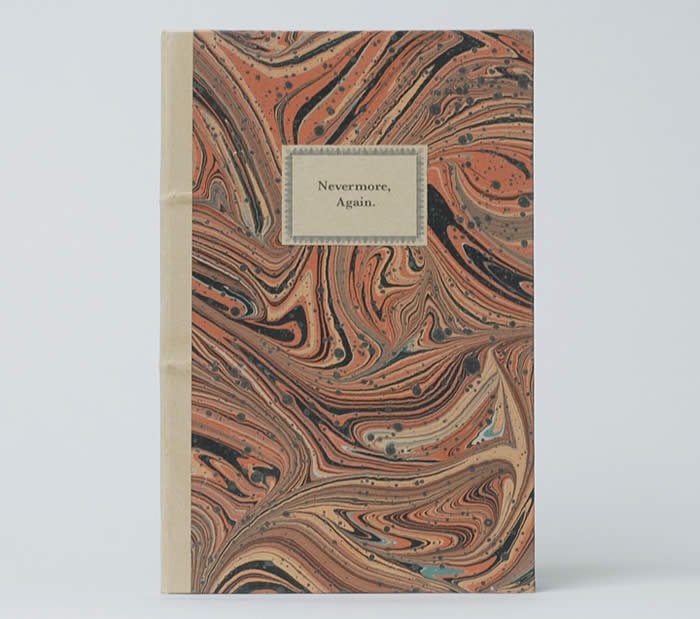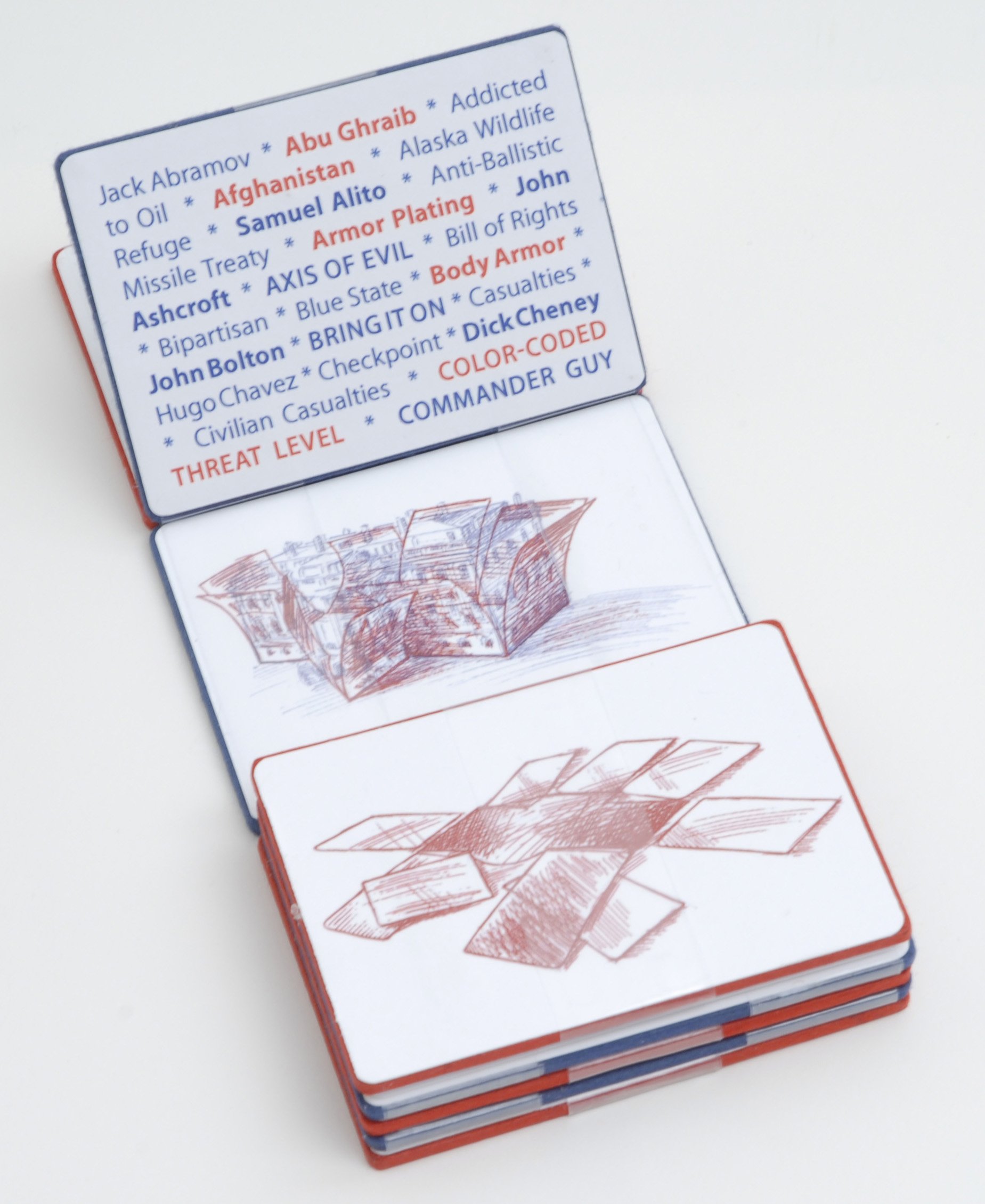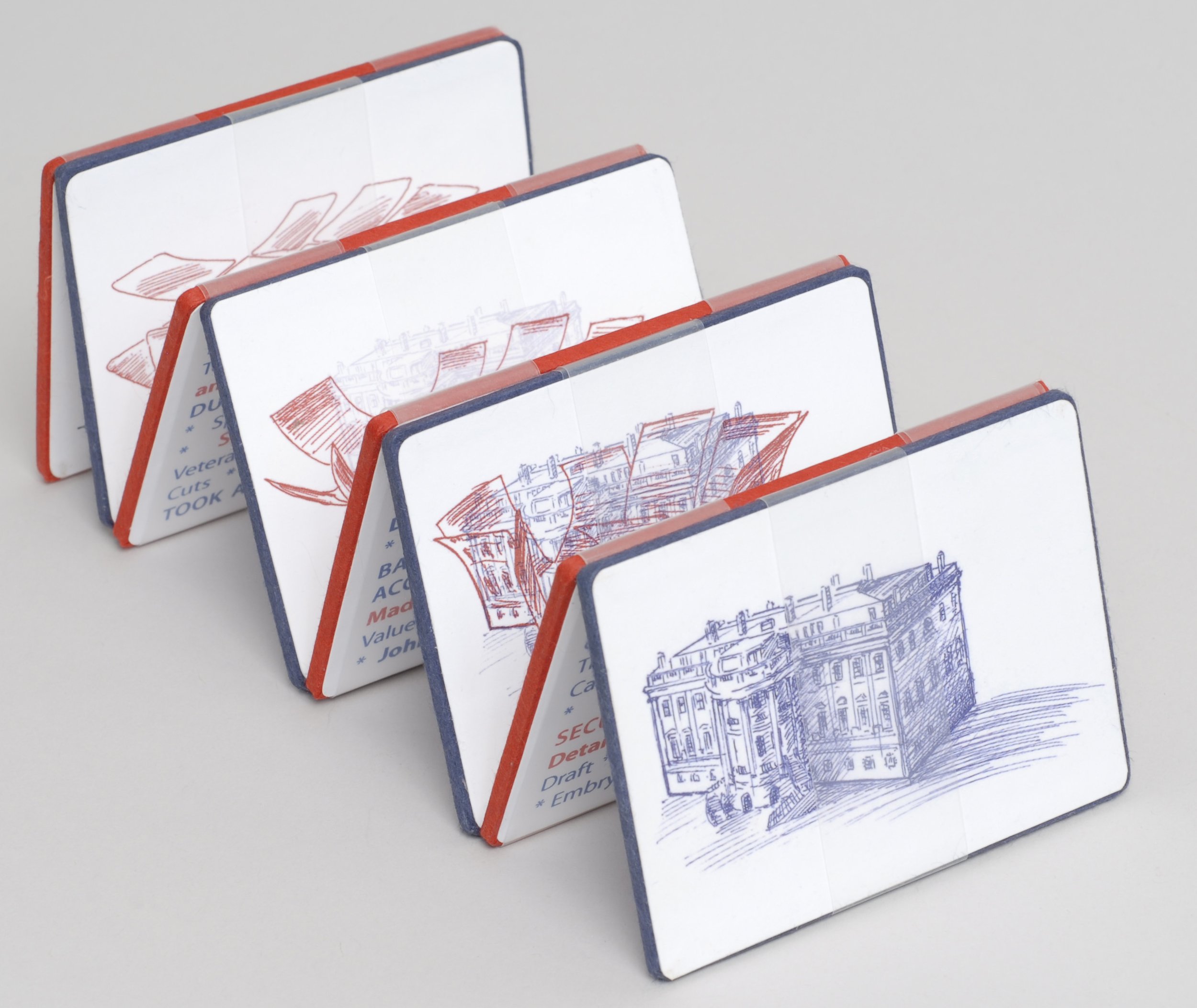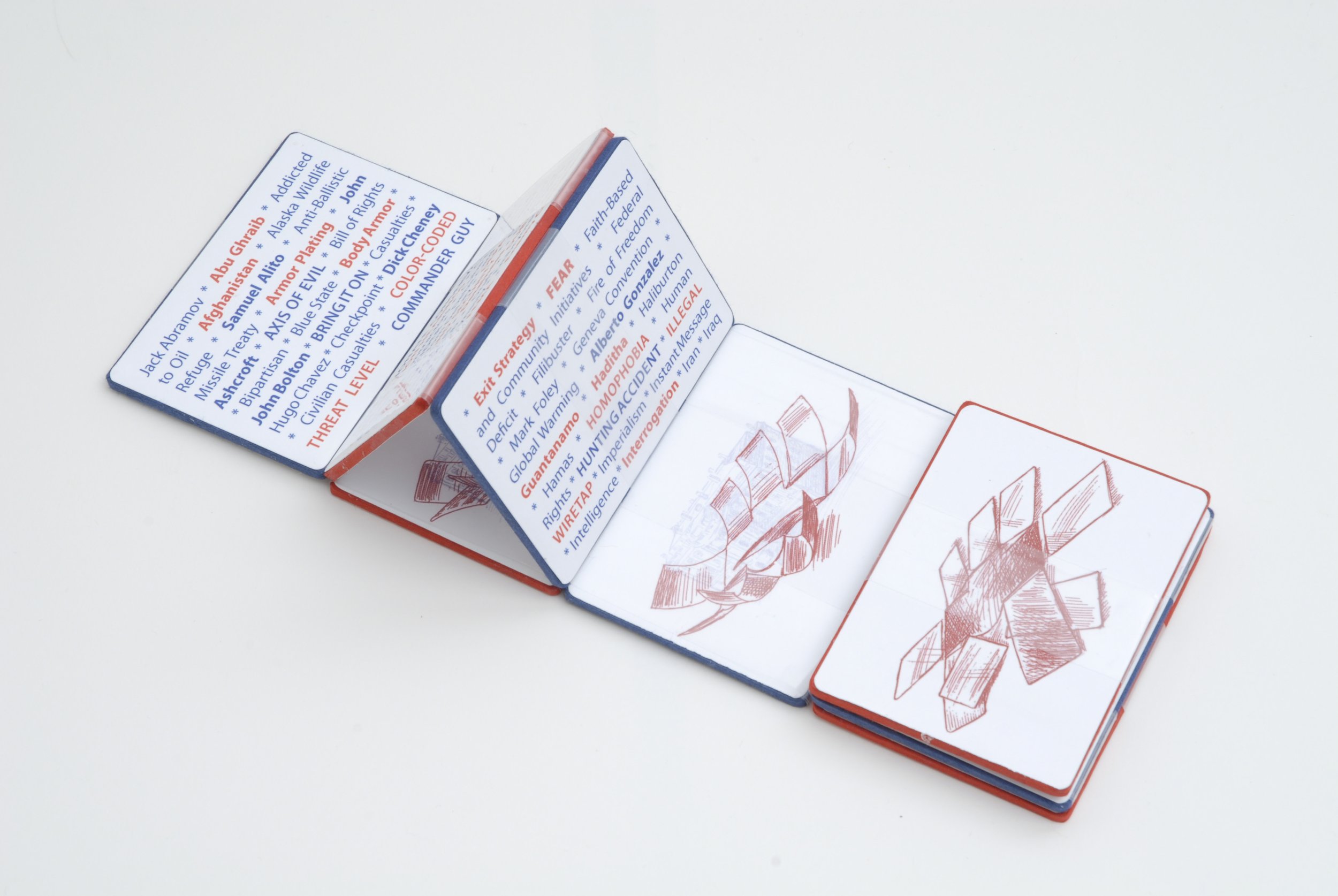Karen Hanmer is one of the most sophisticated and dynamic book artists working in the United States today. Her newest work, The Model Architect: the Panic of ‘09, reminds us that what is old can be new again, sometimes in surprising ways. Her deft combination of text and illustrations from Samuel Sloan’s The Model Architect (1852) with excerpts from the U.S. Department of Housing and Urban Development’s online Guide to Avoiding Foreclosure, shows how elements of history can repeat themselves. Sloan, whose successful career as an architect was adversely affected by the financial collapse in 1857 (The Panic of 1857), provides us with a good example of how historical cycles repeat themselves. Hanmer’s book is part political commentary and part homage to Sloan’s original work. Bound using a drum leaf structure and with a large page format that mirrors Sloan’s original work, The Model Architect refers back to mid 19th century binding in its use of materials and decorative elements. Beautiful to look at, the book nonetheless playfully subverts its role as facsimile by reminding us that we cannot take anything for granted and that what has happened before will happen again, and again….
— Robert Gore, Visual Arts Librarian, UCLA Arts Library
The transition from the detailed, architectural drawings and descriptions to the foreclosue verbage was jarring. It was like I was taking a nice stroll on a warm day in the park when all of a sudden I fell in a cold pond.
— Nick Paldrmic, investment portfolio manager



